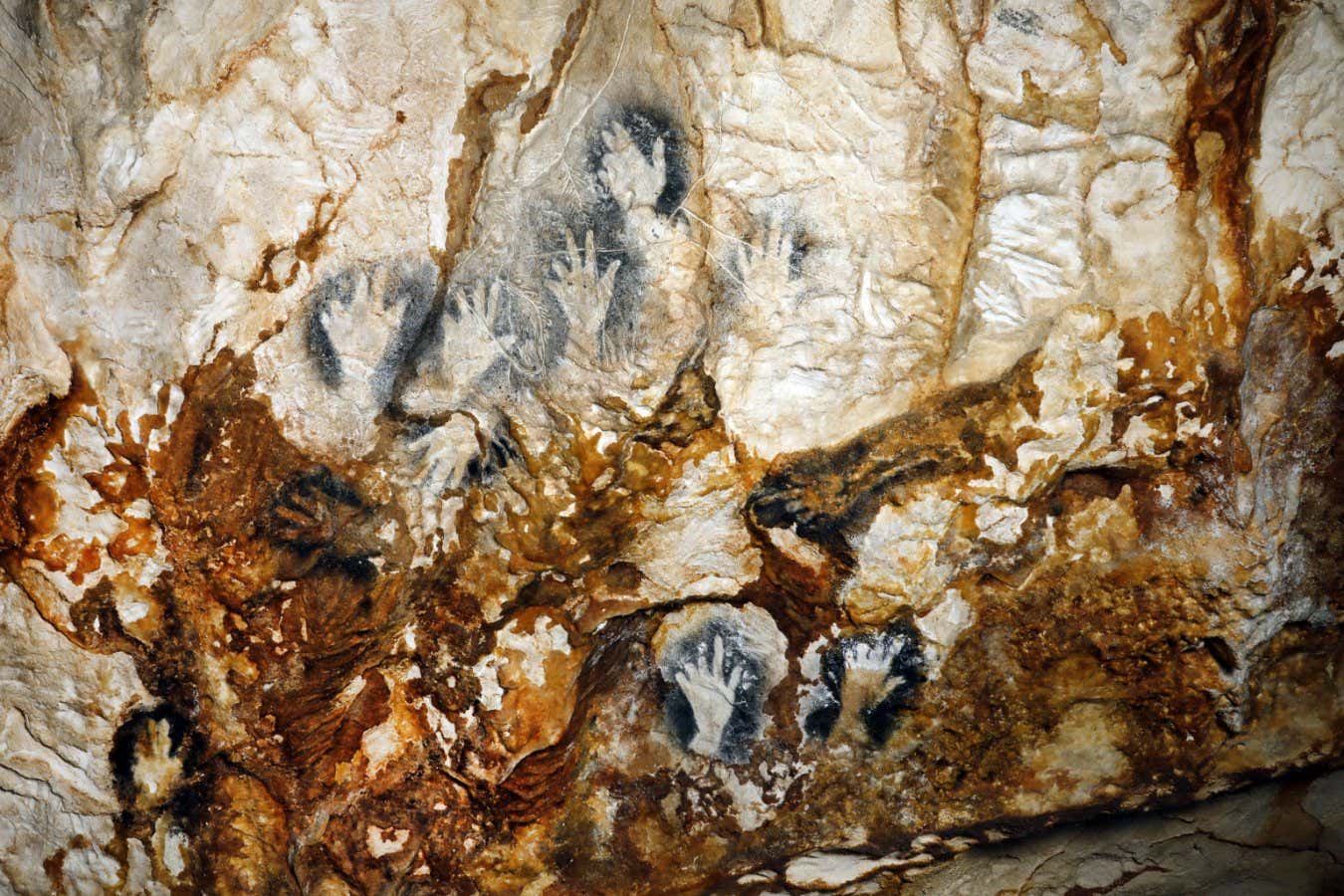In the depths of Gargas cave in the Pyrenees mountains of southern France, a unique and perplexing mystery awaits those who venture into its dark chambers. Amidst the prehistoric paintings and engravings of horses, bison, and mammoths, there are hundreds of hand stencils made tens of thousands of years ago. What sets the hand stencils in Gargas apart is that around half of them are depicted with missing fingers.
Archaeologists have long pondered the reason behind these missing digits. Some theories propose accidents, frostbite, or ritual mutilation as possible explanations. However, researchers Aritz Irurtzun and Ricardo Etxepare from the National Centre for Scientific Research (CNRS) in Bayonne, France, have brought forth a new hypothesis. Through their analysis, they suggest that the hand stencils in Gargas cave represent a Stone Age sign language, possibly making them the oldest known form of writing.
Hand stencils have intrigued researchers for over a century, as they are among the earliest artistic motifs known to us. These stencils, found in various locations worldwide, possess a special significance due to their presence in hard-to-reach places within caves. They appear to have meaning beyond mere doodles and raise questions about the intentions behind their creation.
The mutilated hand stencils found in Gargas cave are particularly intriguing. Of the 231 hand images in the cave, 114 are missing at least one finger segment. Similar patterns are also observed in the nearby Cosquer cave in Marseille, where 28 out of 49 hand stencils are missing digits. It was initially hypothesized that Stone Age individuals purposefully removed their fingers, potentially as part of ritual practices or for practical reasons such as hunting. However, the variety of missing digits in Gargas and Cosquer, as well as the absence of missing fingers in positive handprints, casts doubt on these explanations.
Irurtzun and Etxepare, both linguists, propose that the hand stencils reflect a prehistoric sign language. They point to the fact that language likely originated with hand signs alongside vocalizations, and many societies still utilize symbolic hand gestures today. The researchers analyzed the physiology of the hand and forearm to assess the ease with which the depicted gestures could be made. They found that the patterns of the hand stencils correspond to particular hand gestures, providing evidence that they may represent a form of sign language.
This idea aligns with previous suggestions that Stone Age cave paintings contain hidden codes. Genevieve von Petzinger, a researcher at Tomar Polytechnic Institute in Portugal, has cataloged a wide range of graphic marks found in European caves, some of which are similar across different regions. Ben Bacon, an independent researcher based in London, has even claimed to decipher the meaning of specific symbols associated with animal depictions, suggesting the existence of a hunting calendar.
While some experts remain skeptical about the interpretation of Stone Age cave paintings as more language-like messages, the idea that the Gargas hand stencils represent a form of writing is enticing. If true, it would make them the oldest example of proto-writing known to us, predating formal writing systems by thousands of years.
Determining the precise age of prehistoric cave art is challenging, but recent advancements in technology and research methods may provide further insights. Irurtzun has been involved in an ongoing project to investigate Gargas cave using 3D imaging and specialized lighting to detect hidden paint marks. Additionally, another research team known as First Art is exploring the possibility of extracting DNA from the paint used in cave art, potentially revealing who created these ancient hand stencils.
While the debate continues, the study of Stone Age hand stencils and their potential as a form of sign language or proto-writing opens up new avenues of understanding our ancient human ancestors and their cognitive abilities.
Looking closely at these Stone Age hand stencils, one cannot help but consider the individuals who left their mark. Some stencils indicate the presence of children, while the majority were made by adults, most likely women due to the relative lengths of their index and ring fingers. The possibility of Neanderthals, rather than modern humans, being responsible for some hand stencils adds an additional layer of intrigue. Ongoing research, including the analysis of trapped DNA within paint layers, may shed further light on these ancient artists and their stories.
Ultimately, understanding the purpose and meaning behind Stone Age cave paintings offers invaluable insights into the origin and development of human language, communication, and written expression.
Topics:








